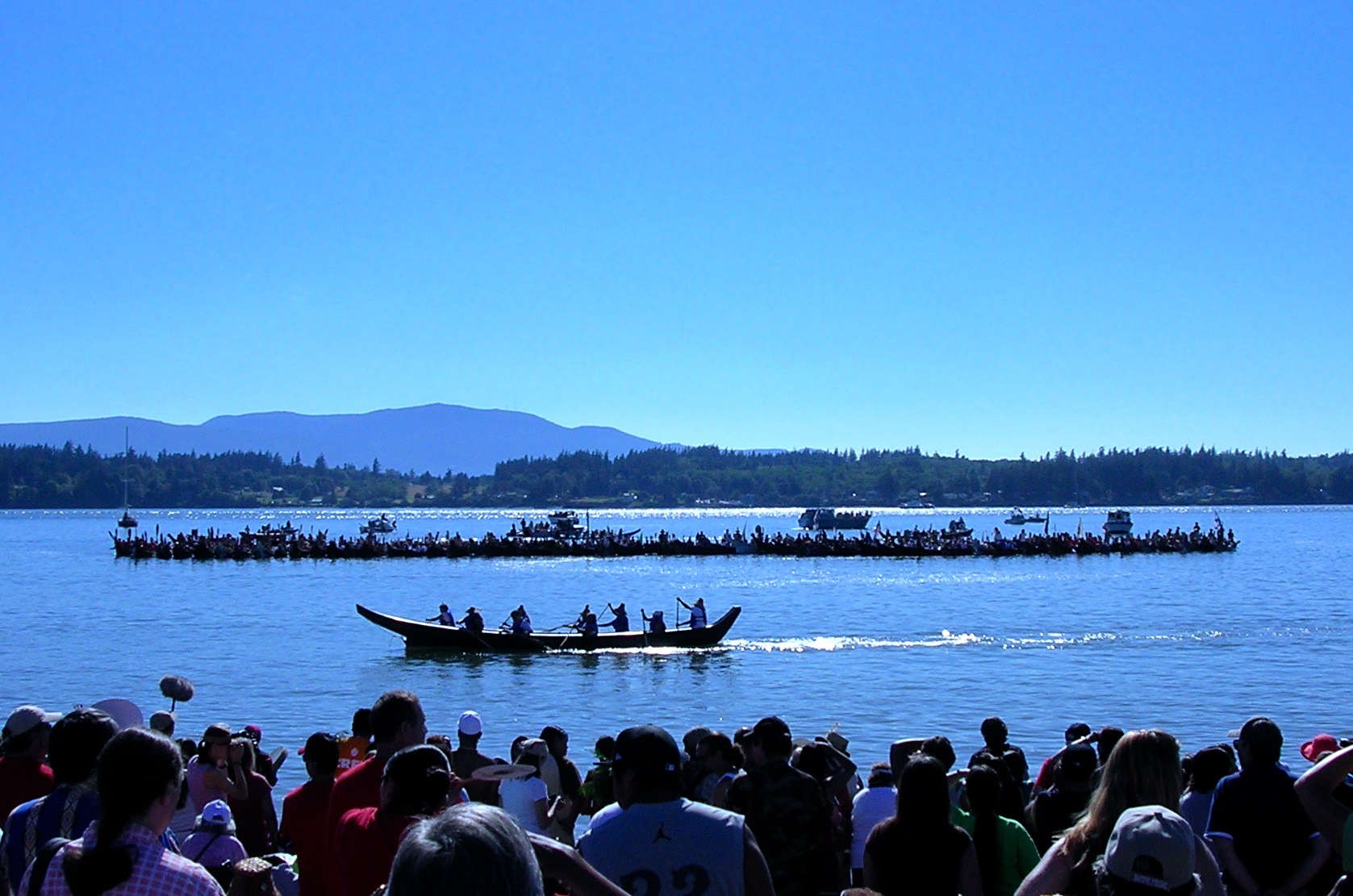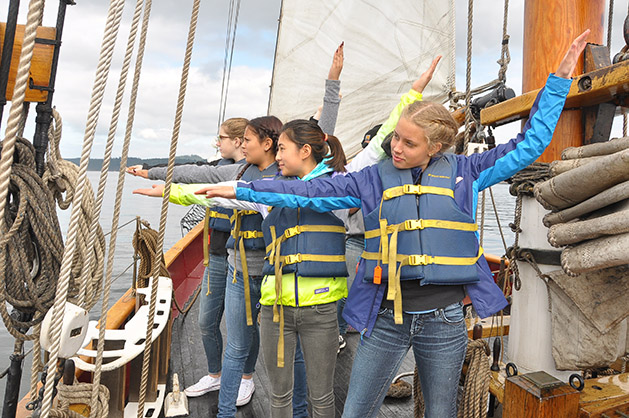All Hands on Deck

Launching the Maritime Washington National Heritage Area
By Washington Trust for Historic Preservation Project Manager Alex Gradwohl
Diving into Washington’s maritime culture requires picking up a few new words and phrases. Our state’s coastal communities are steeped in unique terminology, phrases, and ways of speaking. At times, navigating these distinctions can feel like learning a foreign language: the difference between a schooner and a sloop, a bowline and a clove hitch, an Olympia and a Kumamoto oyster. But other water-based phrases have fully made their way into our shared vocabulary: “learning the ropes,” “clammed up,” “a rising tide lifts all boats.”
The language of maritime heritage speaks directly to the rich, diverse, and long-standing cultures—both historical and present-day—along our saltwater shores. Their stories, like their language, are unique, but also broadly influential to our country’s development and identity.
The towns, cities, ports, villages, and other communities along Washington’s waterfronts are plentiful and complex, each with its own distinctive character and past. But there are also many threads that, like language, tie our state’s saltwater coastline together: shared histories, traditions, trades, crafts, and ways of living. The Maritime Washington National Heritage Area aims to both strengthen these connections and celebrate the many unique stories along our state’s shores.
What is the Maritime Washington National Heritage Area?
In 2019, Congress designated the Maritime Washington National Heritage Area along 3,000 miles of Western Washington’s saltwater coastline. Stretching from Grays Harbor County to the Canadian border, the heritage area includes 18 federally recognized tribes, 13 counties, 32 incorporated cities, and 30 port districts, as well as innumerable harbors, inlets, peninsulas, island shores, and parks—all connected by the nation’s largest ferry system and an extensive highway network. The connection with the sea has shaped communities here since long before roads and railroads were built, and water-based transportation, trade, industries, and ways of life continue to flourish in the present day.
National Heritage Areas (NHAs) are designated by Congress as places where natural, cultural, and historic resources combine to form a cohesive, nationally important landscape. Through their natural and manmade resources, NHAs tell nationally significant stories that celebrate our diverse, living heritage. NHAs build public-private partnerships to better tell the stories of these places and support communities in maintaining and sharing their unique resources.
By working with communities to determine how to make heritage relevant to local interests and needs, NHAs can support historic preservation, economic development, natural resource conservation, recreation, heritage tourism, and educational projects on the local level. Existing NHAs across the country have organized national tourism marketing campaigns, collaborated to create region-wide visitor tours and experiences, run grant programs, offered technical support, led preservation projects, created statewide curricula, and much more.
In short, NHAs build partnerships and share stories that are important to America’s identity, past and present. The Maritime Washington NHA celebrates the water-based stories and cultures of our state’s saltwater shores—boosting tourism, strengthening maritime industries, and finding new ways to collaborate and share resources.
Who’s running this ship?
Although supported by the National Park Service, NHAs are unique in that they are locally run and completely non-regulatory. There is no change in ownership of land within the NHA, no added rules or regulations, and participation is completely voluntary. Local governments, tribes, organizations, and members of the public can join in as much or as little as they wish.
Each National Heritage Area is facilitated and implemented by a local group. For the Maritime Washington NHA, that’s the Washington Trust for Historic Preservation. We’re thrilled to be embarking on this new and exciting journey for our state’s saltwater shores and can’t wait to bring you aboard.
Steering Committee
Over the past few months, the Washington Trust has convened a Steering Committee to help guide the planning of the Maritime Washington NHA. This committee includes members from across the region, representing a wide range of public agencies, private industries, heritage organizations, and other maritime groups. Meet the Steering Committee members here.
How can I get involved?
Over the next year, we’ll be working with coastal communities to chart a course for the Maritime Washington NHA. We’ll collaborate with museums, tribes, counties, cities, ports, parks, industries, trades groups, preservationists, environmental advocates, chambers of commerce, recreational guides, boating organizations, tourism agencies, individual business owners, and anyone else who helps care for and share the stories of our state’s maritime culture.
This planning process will be a bottom-up effort, with local communities shaping the future of the NHA. This themed issue of This Place features stories from some of the partners we’ve already connected with, but we know there are more of you out there, so join us! Throughout the first half of 2021, there will be lots of opportunities for you to share your views and ideas through virtual workshops, surveys, social media, focus groups, and more. These collaborative efforts will culminate in a management plan, which will serve as a framework for how we’ll work together. Our goal is to collaboratively create a plan and return it for public review by Fall 2021.
Want to know how you can help navigate the seas ahead? Current information about the heritage area is always available at preservewa.org/mw-nha, where you can also subscribe to our email updates for information about upcoming events and opportunities to get involved.
We can’t wait to set sail on this new adventure with you. Anchors aweigh!

Image at top: Canoes passing a shoreside welcoming crowd at Lummi, near Bellingham, while other canoes and paddlers lined up in the background await their turn to be greeted and granted permission to land during the 2007 Tribal Journey to Lummi. Photo courtesy of Philip H. Red Eagle.
